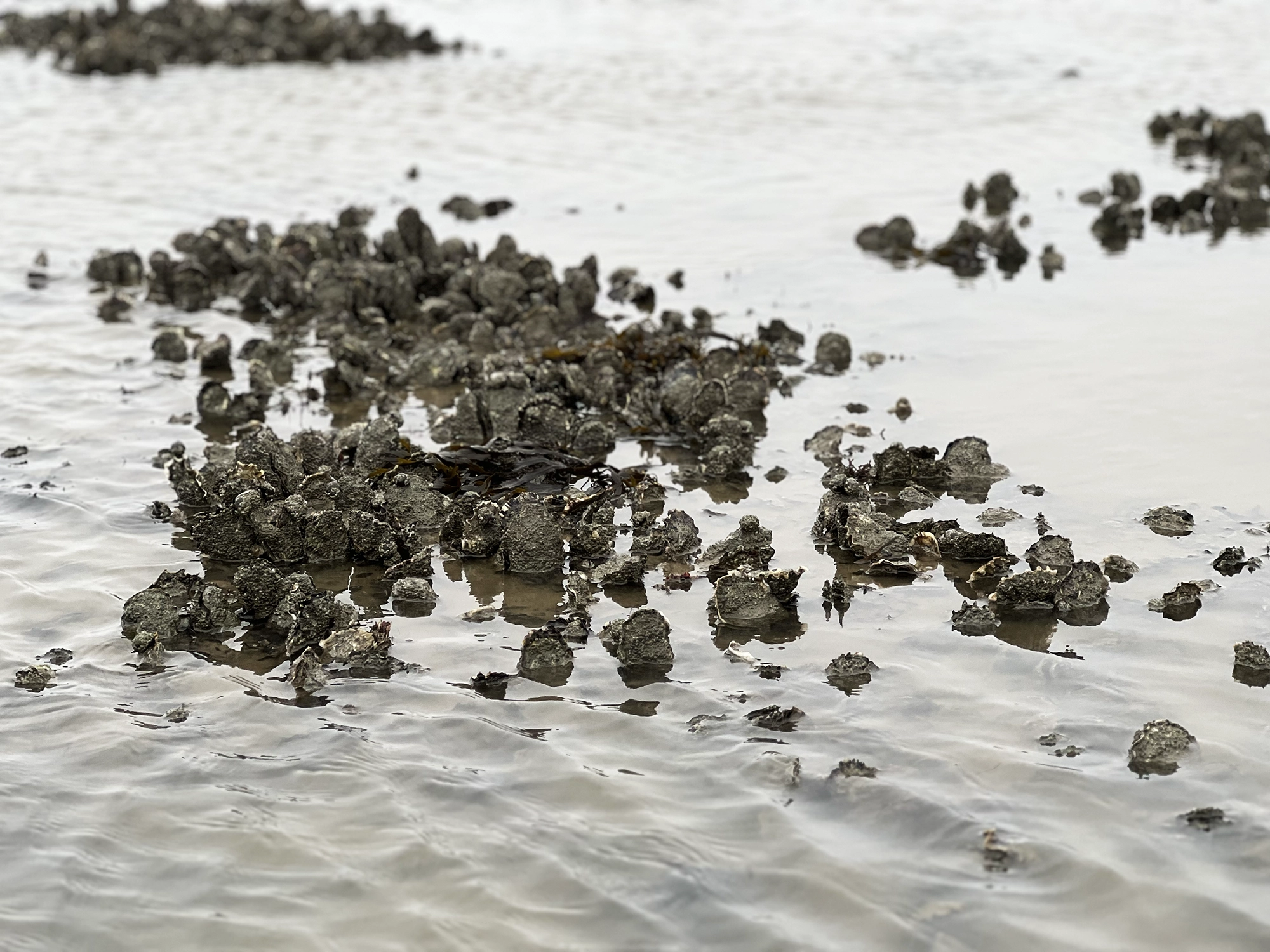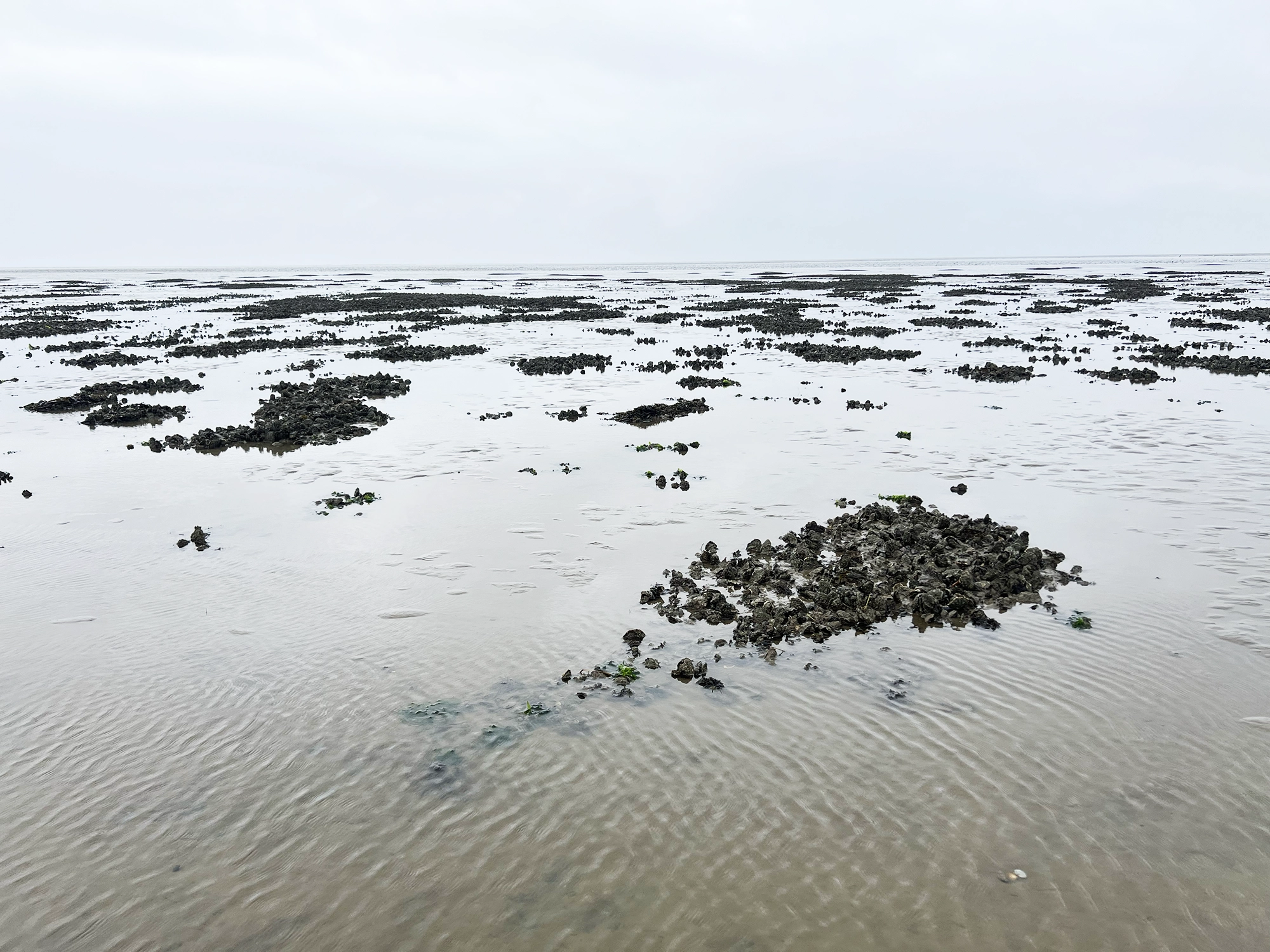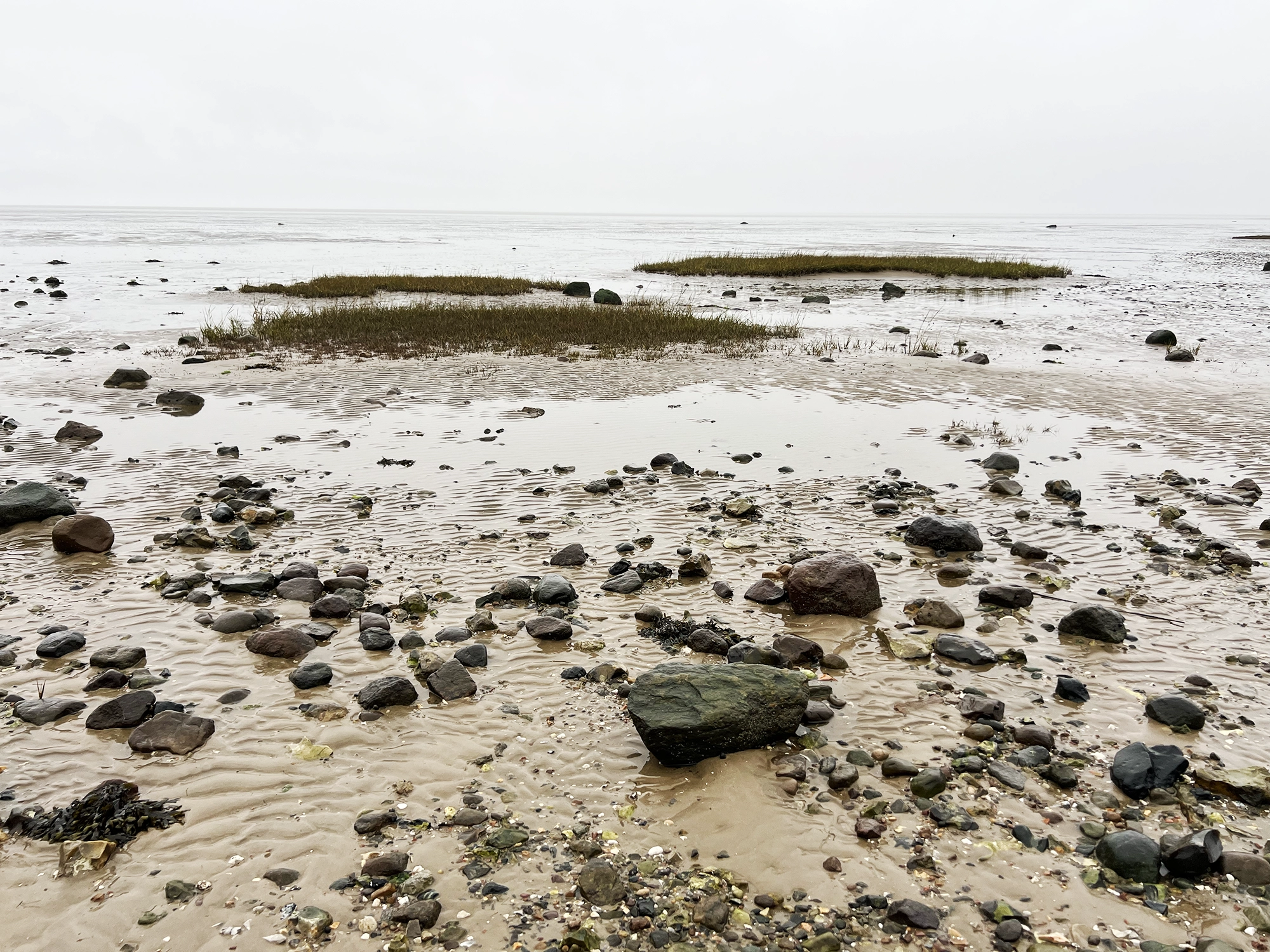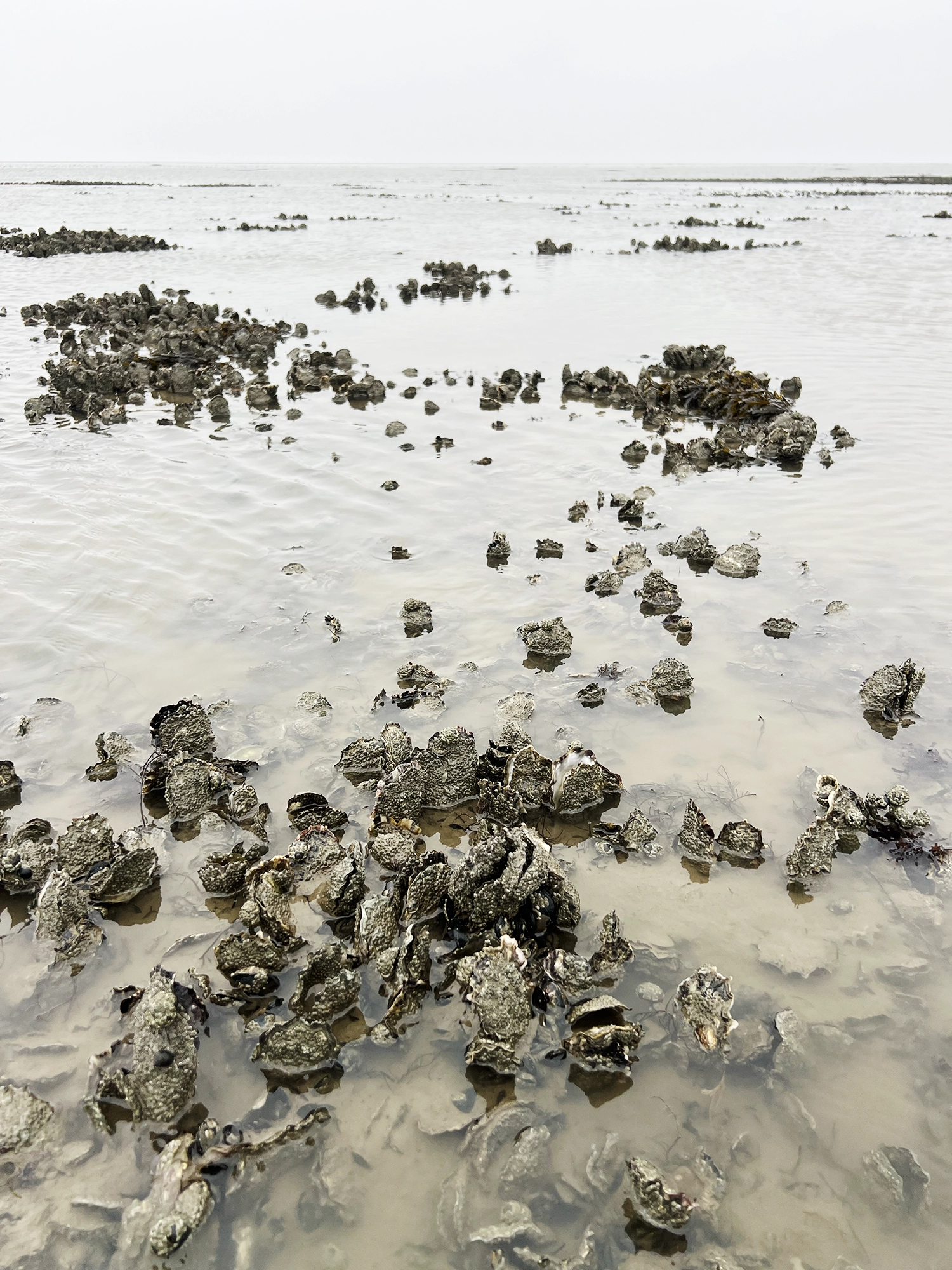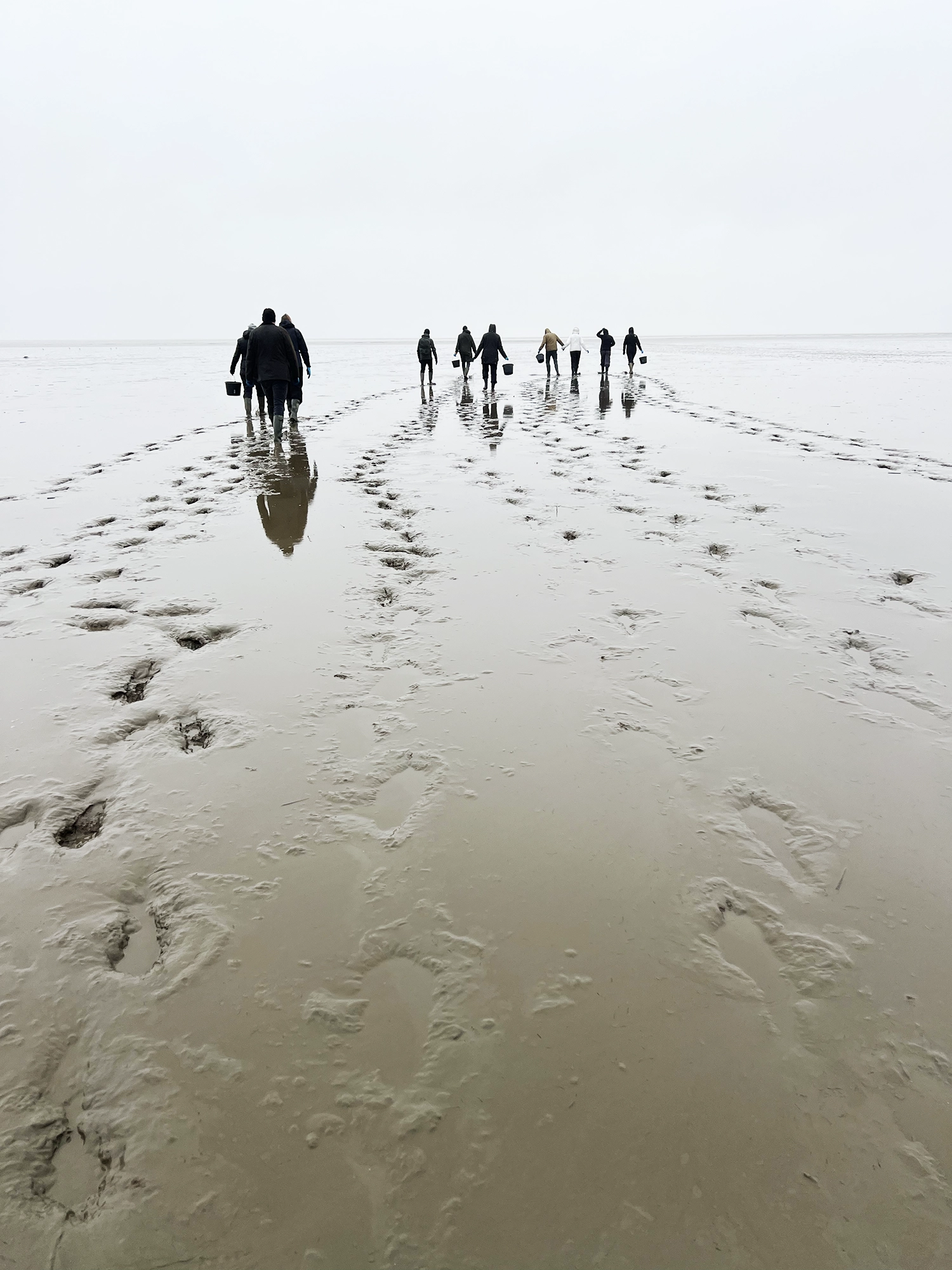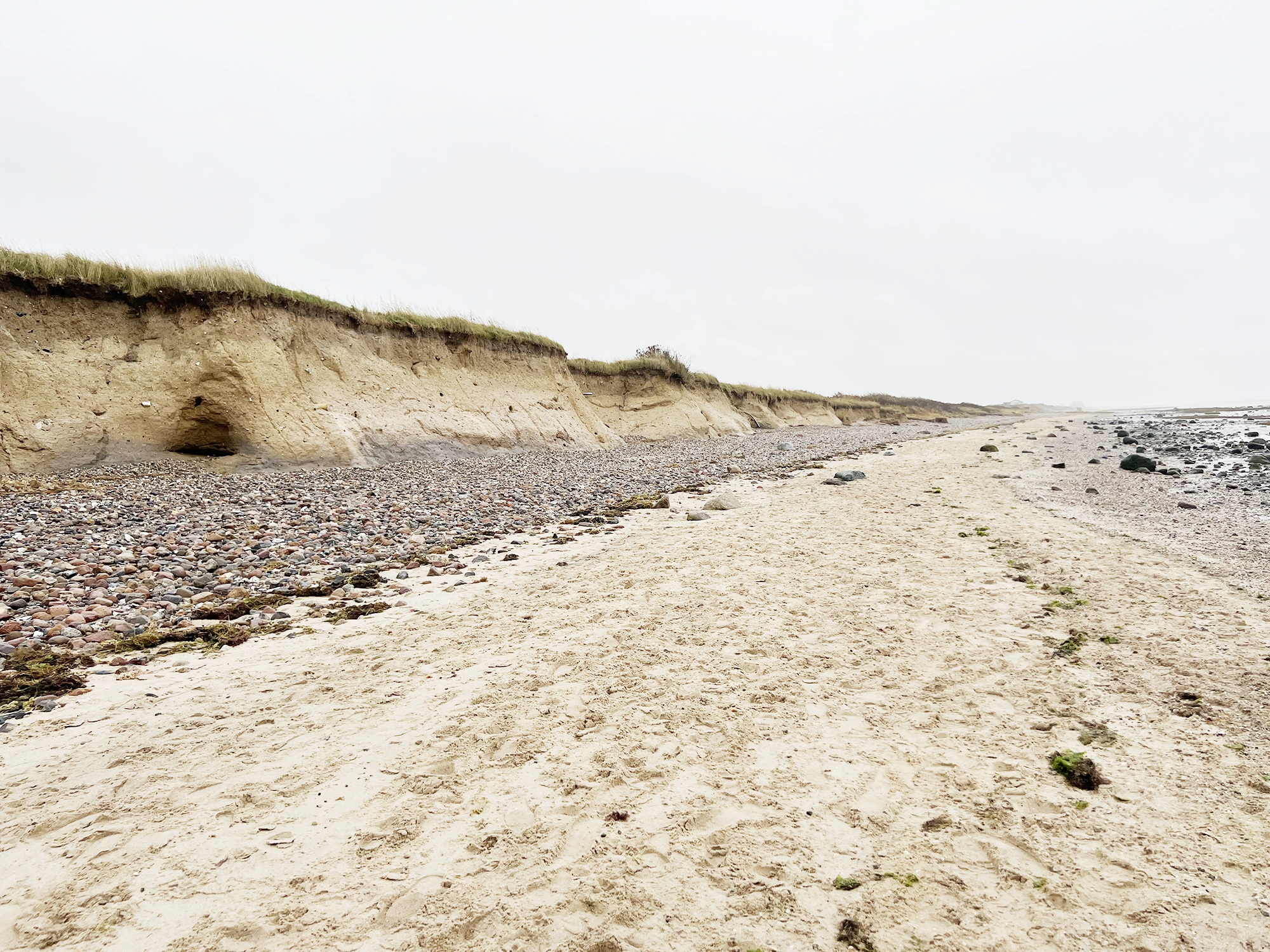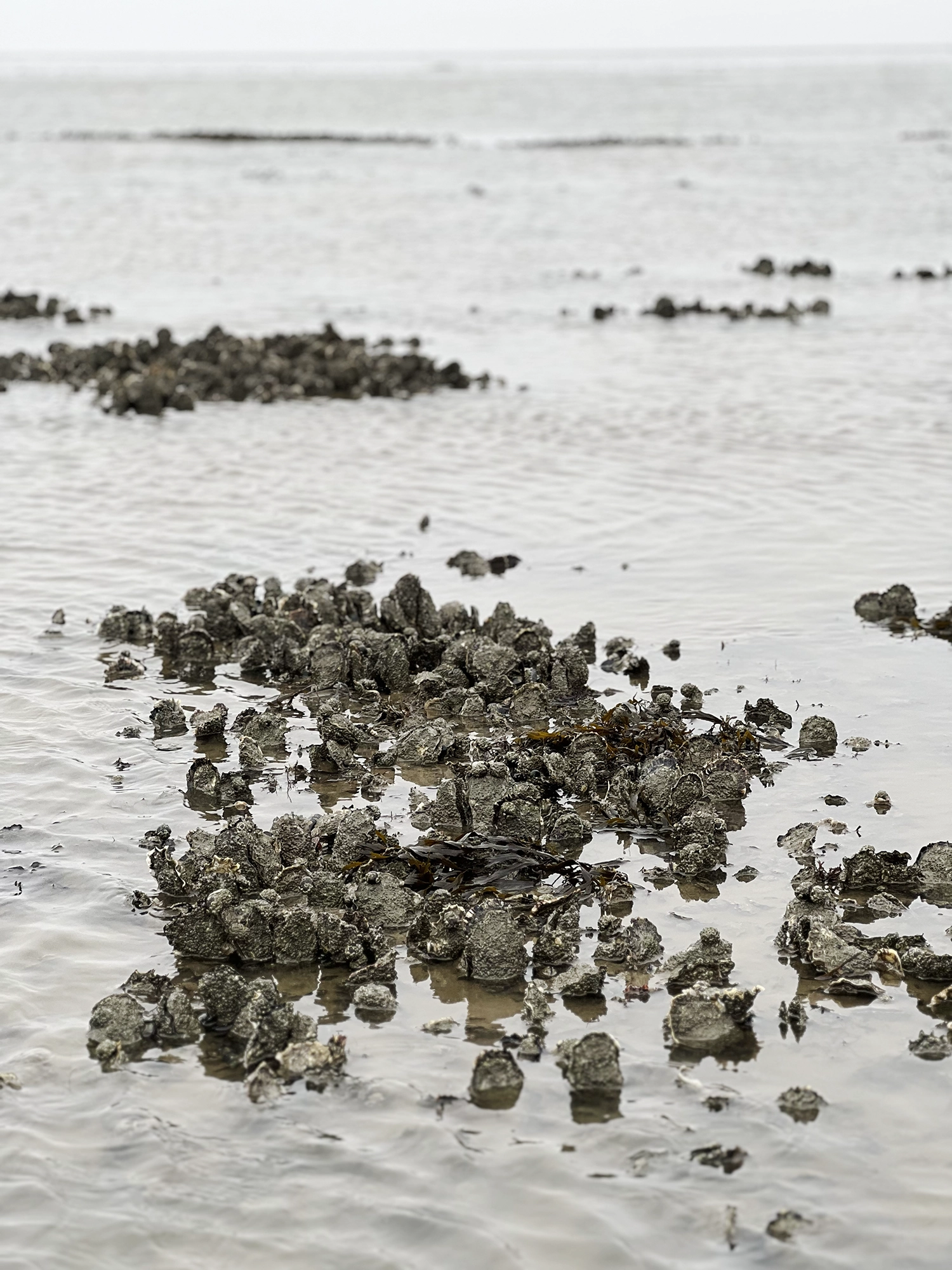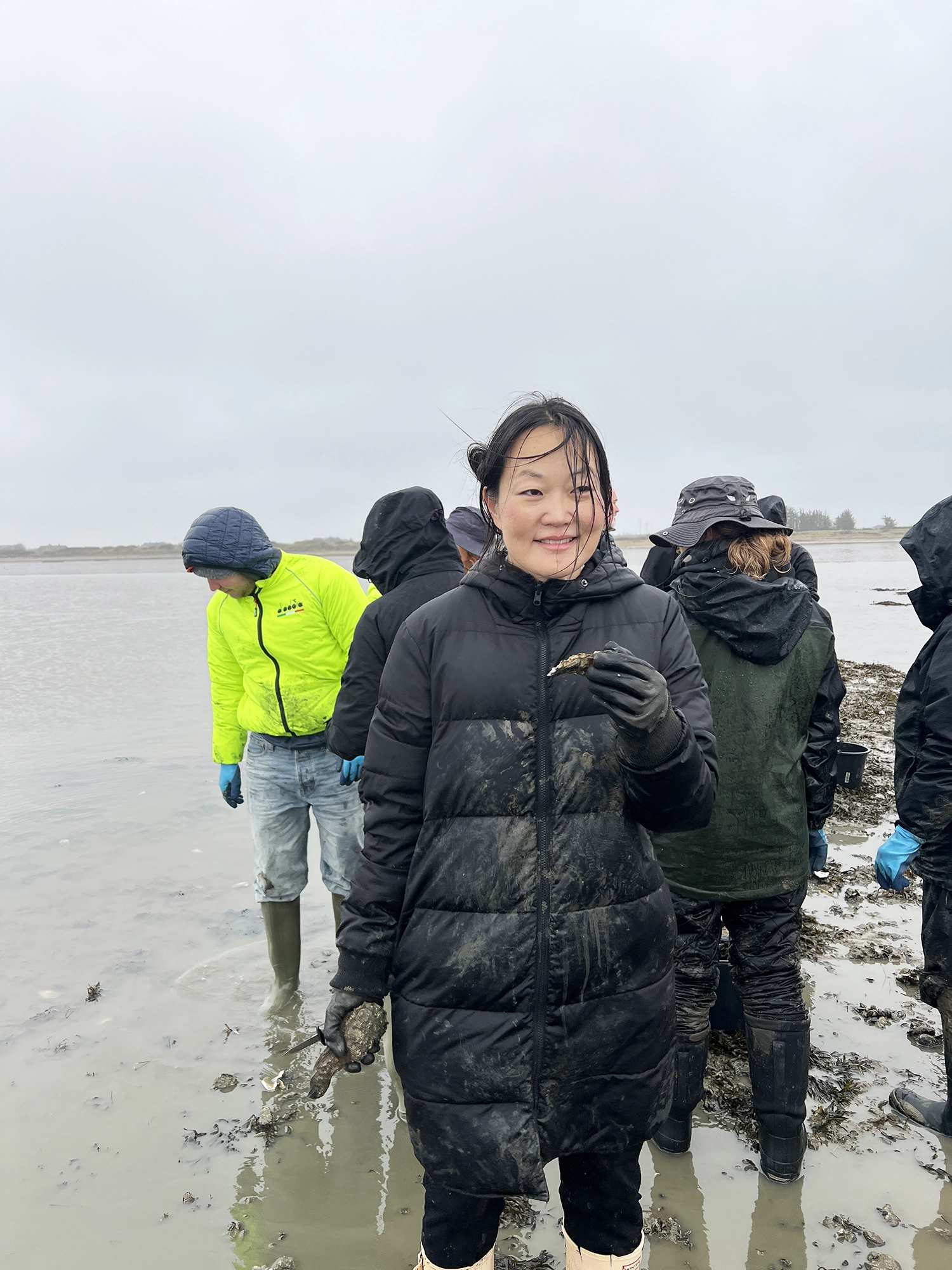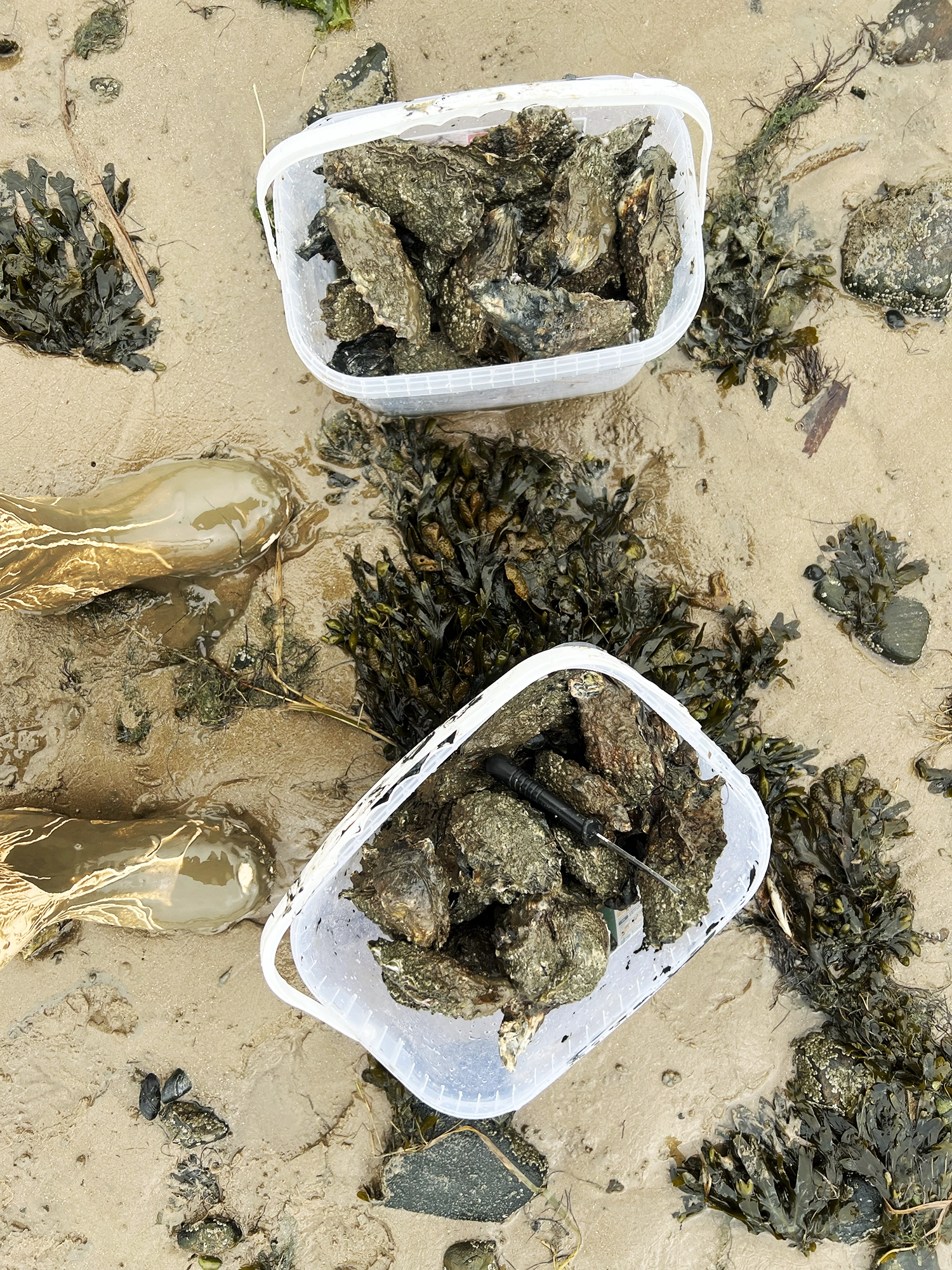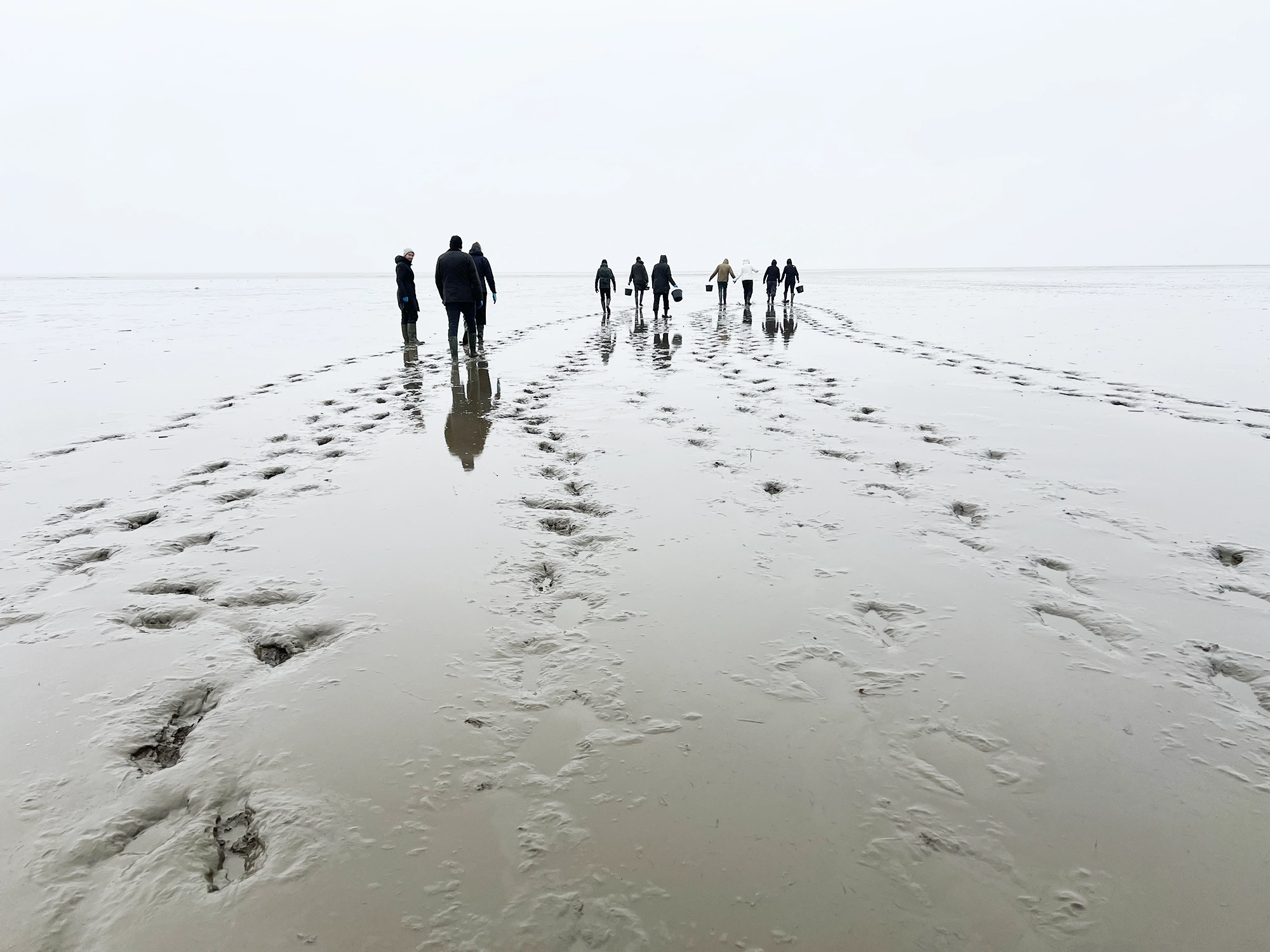
One November morning, my mom and I set off for the Wadden Sea. We had signed up for an oyster safari with Marksture, a local operator that really knows the area. Everything out there runs on the tide, because if the water doesn’t recede enough, you simply can’t reach the oyster reefs. Our original meeting point was on Rømø, but it was moved to Hjerpsted shortly before we left home, since the tidal conditions were better there.
We were a small group of about twelve people, and once the practicalities were handled, including the handout of rubber boots, oyster knives, and buckets, we walked along the coast toward the spot our guide, Jan, said would be perfect that day. The native Danish oysters disappeared from the Wadden Sea decades ago. Today the population is almost entirely Pacific oysters, which are an invasive species with no natural predators here. You don’t have to worry about taking too many, because collecting them actually helps keep the population in check and supports the balance of the ecosystem.
The seabed was a mix of sand and mud, and if you didn’t keep a quick pace, you would sink right in with your boots. Jan showed us how to take short, fast steps to avoid getting stuck. He also assured us that you wouldn’t sink deeper than about eight inches before you hit firmer ground again.
It was incredible how many oysters there were out there, so it was just a matter of filling your bucket with as many as you could carry. We had a few breaks along the way, so Jan could share little stories and demonstrate how to open oysters. He had brought snaps (Danish aquavit) and hot sauce, so anyone who wanted to taste the fresh catch could do so. The oysters were amazing out there under the open sky with the sea breeze in our faces. And if you got too enthusiastic and had too many from your bucket, it was easy to gather more before heading back.
Marksture also offers an oyster barbecue on land, but my mom does not eat oysters, so we skipped that part. Instead, we drove home with two big buckets full of fresh oysters from the Wadden Sea. A beautiful experience in a stunning setting and plenty of delicious oysters to bring home.
Thinking About Going on an Oyster Safari? Here’s What to Know
We went with Marskture.dk, but several other operators offer tours, and they all run things differently, so check the details with the one you choose and see what’s included.
With Marksture you could rent rubber boots, buy gloves, and borrow oyster knives and buckets for free. There were only a limited number of buckets available, so I recommend bringing your own.
Bring good gloves. Waterproof is ideal, but thick gardening gloves also work. Oyster shells are sharp and you can cut yourself easily.
Dress warmly. I wore a regular jacket and jeans, which turned out to be too cold. I recommend a windproof jacket and some waterproof pants at the very least, but make sure you can move comfortably. Also bring a change of clothes in the car. When your boots get stuck in the mud it’s easy to lose balance, and it’s nice to have something dry waiting for you when you get back on land.
The oysters in the Wadden Sea are of the long, slender kind, and many of them grow together in clusters or attach themselves to other mussels. Try to avoid the ones that are too fused together, because they can be very hard to open.
If you are planning a trip to the Wadden Sea area, Marskture’s Motel is a really charming place to stay. The old tobacco drying house in Højer has been turned into a small, family friendly bed & breakfast with eight rooms, all with a private bathroom. Marskture's Motel is run by the same family that runs the Marskture excursions, and some of their oyster tours end here with a cozy oyster barbecue. If you want a comfortable and practical base close to the Wadden Sea, this is a really good pick.
